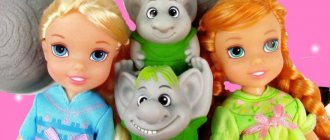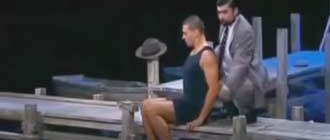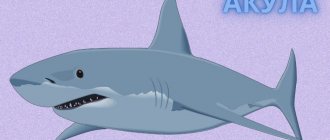Methods of introducing preschoolers to the objective world
Anzhelika Gulakova
Methods of introducing preschoolers to the objective world
Methods of introducing preschoolers to the objective world
An important place in enriching children's vocabulary is occupied by special classes to familiarize themselves with the objective world . Their main goal is to introduce into children’s speech the names of objects , their parts, some signs, properties and qualities. Children learn to identify the qualities and properties of objects , their purpose, and then generalize them into conceptual groups.
The methodology for these classes was proposed by E. I. Tikheeva and clarified and supplemented by V. I. Loginova. The authors identify 3 groups of classes to familiarize themselves with the subject world :
1- initial familiarization with the subject .
2 - familiarization with the qualities and properties of objects .
3 - formation of concepts in the process of generalizations.
Initial familiarization with objects - introducing new names of objects into the dictionary and actions with them . Conducted in younger and middle ages.
Meaning:
1. A holistic idea of the subject
2. The connection between the purpose of an object , its structure, and material.
Requirements for these classes:
1. Cognitive activity is represented by practical tasks and is based on gaming techniques.
2. Use of visual material according to the number of children.
3. Active actions with objects , children choose suitable ones and motivate the choice.
4. Objects must be known to children.
5. Leadership is provided through instructions and questions.
Lesson structure.
The introductory and final parts are similar to other lessons.
Main part
1. Statement of the educational task ( the formation of differentiated perception is carried out through the game).
2. Examination of the subject , structure, purpose, introduction of words.
3. Children’s choice of subject , consolidation of knowledge, consolidation of words.
In classes to deepen knowledge about the qualities and properties of objects holistic understanding of the object : a connection is established between the purpose of the object and its structure , the material from which it is made, and the specific features of the object are determined .
Meaning:
1. The concept is formed that all things are made of different materials; there are processes that transform material into a thing (sewing, knitting, modeling, woodworking, etc.)
2. The ability to see material in a thing is formed, to establish the properties of the material in some ways (press, bend, tear)
.
Requirements
1. Thorough sensory examination.
2. Visual material on the number of children.
3. Inclusion in activities.
4. The qualities being isolated must be clearly presented .
5. Comparison with other qualities and properties of other objects .
6. The teacher’s guidance is carried out through questions and precise instructions.
Lesson structure
1. The introductory and final parts are similar to other classes.
Main part
1. Isolating qualities in the situation of a particular activity (first indicating the action, then asking the children)
.
2. Teaching research actions to isolate the desired property (first indicate the action, a question of a stating and indirect nature (Strong paper, why)
.
3. An exercise in identifying a new quality and property in a variety of objects - consolidating properties.
Complication - at an older age, these classes become more complicated, they are called “Comparison of objects "
their goal is to select the most accurate word to characterize the highlighted features.
Requirements
1. A sufficient number of compared characteristics (shape, size, color, their differences and commonality.
2. Planned comparison of the whole, parts and details, generalization as a whole.
3. Selection of teaching methods - instructions and questions.
4. Maximum speech activity of children.
Formation of specific and generic concepts in the process of generalization.
Classes are held in all age groups. the same essential features in different objects There are two types of these activities - the formation of specific and generic concepts.
Species concepts are objects of the same type with insignificant differences, for example: chair, stool, armchair.
Lesson structure
The introductory and final parts are similar to other classes.
Main part
1. The need for choice through the game.
2. Selecting an item from a group of similar ones (how did you find out? Why did you take this item and not another? What does this item that others don’t (and vice versa? After each answer - motivation - Why do you think so?
3. Exercise in choosing objects .
Generic concepts - objects of different types , but united by one purpose (dishes, transport, furniture, etc.)
Lesson structure
The introductory and final parts are similar to other classes.
Main part
1. Consideration of 3-4 types, highlighting known features (what is the car for, who drives it)
2. Work on the concept ( definition of an essential feature, generalization of a group of 3-4 types and introduction of the word generalization (we highlight what is the same and what is different for all types and conclude: everything that is used to transport people and cargo is called transport)
3. An exercise in subsuming specific concepts under generic ones.
Subsequent work is based on consolidation and differentiation of concepts.
Long-term planning in the senior group on the subject-social world and experimentation
ADVANCED PLANNING
in the senior group
on the subject-social world and experimentation
for the 2017-2018 academic year.
Tasks:
Formation of a child as a free, creative personality with self-esteem and respect for people, a citizen and patriot with an active position in life;
Contribute to the preservation and strengthening of physical and mental development;
Foster the need for a healthy lifestyle;
To promote the formation of skills of reasonable behavior, to teach how to behave adequately in different situations;
To educate a humane, socially active personality, capable of understanding and loving the world around us, nature and treating them with care.
To develop the cognitive activity of children through entertaining experiences and experiments. To develop the ability to draw conclusions and inferences.
To teach how to conduct experiments and experiments with objects of living and inanimate nature.
To develop experience in following safety rules when conducting experiments.
To foster a desire to preserve and protect the natural world, to follow accessible environmental rules in activity and behavior.
Maintain preschoolers' interest in the environment and satisfy children's curiosity.
September
| Topic of the week | OOD | Program content | Literature |
| 1 Week Topic: “Celebration of knowledge. Our kindergarten" | Monitoring | ||
| 2nd week Topic: “Autumn time, the charm of the eyes” | Monitoring | ||
| 3rd week Topic: “Nature's Pantry. People's work in autumn" | Topic: “Bread is the head of everything” | To form children's understanding of bread - one of the greatest riches on earth. Learn to trace the chain of formation of a loaf of bread (from grain to baking). Develop knowledge about the work of grain growers. Exercise your ability to explain proverbs about bread. | O.F. Gorbatenko “Complex classes with children 4-7 years old” P. 68 |
| Week 4 Topic: “The Earth is our common home” | Topic: “Getting to know your body”, “Can I touch it?” | Consolidate basic knowledge about the organs of the human body and their functioning. Learn to take care of your health. Consolidate the ability to generalize acquired knowledge. Develop interest in experimental activities. | L.L. Masalova “I am the world” P. 35 I.S. Batova “Experience and exp.” |
October
| 1st week Topic: “My city” | Topic: “Our hometown” | Continue to introduce the history of your hometown and its attractions. Arouse interest in the traditions of the city and the people who glorified it. To cultivate a sense of respect for the small homeland, to develop the desire to take part in its transformation. | L.L. Masalova “Me and the World” Page 63 |
| 2nd week Topic: “Native Country” | Topic: “We live in Russia” | Continue to introduce your home country (cities; coat of arms, flag, anthem). Develop a sense of pride in your home country. Create a desire to learn more about Russia. | L.L. Masalova “Me and the World” P. 68 |
Long-term planning for familiarization with the outside world in the senior group
Tasks:
expand your understanding of the diversity of indoor plants; learn to recognize and correctly name indoor plants; talk about professions related to caring for indoor plants; consolidate knowledge about the basic needs of indoor plants, taking into account their characteristics; improve plant care skills; cultivate a caring attitude towards plants. . (“Acquaintance with nature in kindergarten.” A. Solomennikova p. 66)
4 "Excursion to the Zoo"
Tasks:
expand children’s understanding of the diversity of the animal world, that man is part of nature, and he must preserve, protect and defend it; to form the idea that animals are divided into classes: insects, birds, fish, animals; develop cognitive interest, curiosity, emotional responsiveness. . (“Acquaintance with nature in kindergarten.” A. Solomennikova p. 63)
March
1 “Flowers for Mom”
Tasks:
expand your understanding of the diversity of indoor plants; learn to recognize and correctly name indoor plants; give basic ideas about plant propagation by vegetative means; learn to plant seedlings of indoor plants; to form a caring and attentive attitude towards loved ones, a positive attitude towards work. (“Acquaintance with nature in kindergarten.” A. Solomennikova p. 62)
2 “Water Resources of the Earth”
Tasks:
expand understanding of the diversity of water resources: springs, lakes, rivers, seas; about how a person can use water in his life; about how to use water resources economically; consolidate knowledge about the water resources of their native land; about the benefits of water in the life of humans, animals and plants. (“Acquaintance with nature in kindergarten.” A. Solomennikova p. 69)
3 "Journey into the Past of the Light Bulb"
Tasks:
introduce children to the history of the light bulb, arouse interest in the past of this item. . (“Acquaintance with the subject and social environment” by O.V. Dybin p. 41)
4 “Visiting the artist”
Tasks:
to form ideas about the social significance of the artist’s work and its necessity; show that the products of his work reflect feelings, personal qualities, interests. . (“Acquaintance with the subject and social environment” by O.V. Dybin p. 43)
April
1 "Journey into the Past of the Vacuum Cleaner"
Tasks:
arouse interest in the past of objects; lead to the understanding that a person invents and creates various devices to make work easier. . (“Acquaintance with the subject and social environment” by O.V. Dybin p. 45)
2"Russia is a huge country"
Tasks:
to form the idea that our huge, multinational country is called the Russian Federation (Russia), there are many cities and villages in it; to get from one end of the country to the other, for example from the city of Kaliningrad to the city of Vladivostok, you need to travel by train for several days. Introduce Moscow - the main city, the capital of our Motherland, and its attractions. (“Acquaintance with the subject and social environment” by O.V. Dybin p. 46)




